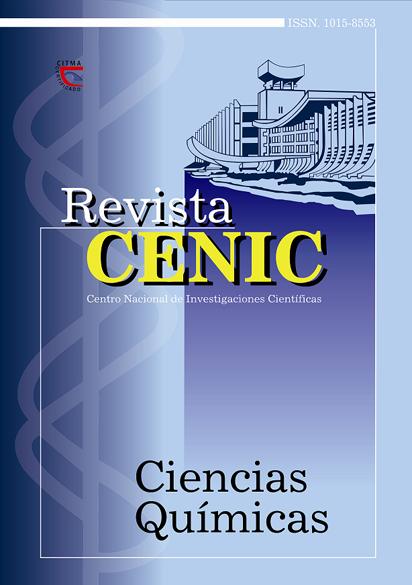Cementos óseos acrílicos modificados con acetato de vinilo. Caracterización físico química, mecánica y microestructural
Abstract
The results of preparation and physical chemical and mechanical characterization of bone cements formed
by PMMA with 10, 50 and 90 % (w/v) of vinyl acetate (AcV) and loaded with 30 % of hydroxyapatite Coralina® HAP – 200
are reported. The samples were prepared manually mixing the solid (HAP-200 and PMMA) with the liquid (AcV and
MMA) phase and they were left to a temperature of (23 ± 1) °C during 24 h before packing them for later research. The
compression strengths were evaluated in standardized test tubes by quintupled. The formulations that contain 10 % of
AcV showed compression strengths higher than established in the ISO 5833 regulation for mechanical properties
evaluation of acrylic bone cements. This value indicates that this composition is appropriate for its use as bone cement.
The results showed that the increase of the content of AcV in the formulations, decrease the axial compression
strengths and the module of elasticity. The analyses by Infrared Spectroscopy and 13C Nuclear Magnetic Resonance,
allowed to establish that no chemical interaction take place between the organic phases with the hydroxyapatite.
Besides, it was founded that a copolymer methyl methacrylate -co- vinyl acetate formed had not been reported its use
in this type of cements before. The bioactivity was demonstrated by immersion of the samples in simulated biological
fluid. In this kind of solutions the nucleation and growth of crystal with similar morphology and composition to biological
apatite over the surface of the samples
Downloads
Published
How to Cite
Issue
Section
License

This work is licensed under a Creative Commons Attribution-NonCommercial-ShareAlike 4.0 International License.
Los autores que publican en esta revista están de acuerdo con los siguientes términos:
Los autores conservan los derechos de autor y garantizan a la revista el derecho de ser la primera publicación del trabajo al igual que licenciado bajo una Creative Commons Atribución-NoComercial-CompartirIgual 4.0 que permite a otros compartir el trabajo con un reconocimiento de la autoría del trabajo y la publicación inicial en esta revista.
Los autores pueden establecer por separado acuerdos adicionales para la distribución no exclusiva de la versión de la obra publicada en la revista (por ejemplo, situarlo en un repositorio institucional o publicarlo en un libro), con un reconocimiento de su publicación inicial en esta revista.
Se permite y se anima a los autores a difundir sus trabajos electrónicamente (por ejemplo, en repositorios institucionales o en su propio sitio web) antes y durante el proceso de envío, ya que puede dar lugar a intercambios productivos, así como a una citación más temprana y mayor de los trabajos publicados (Véase The Effect of Open Access) (en inglés).














